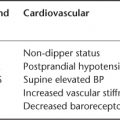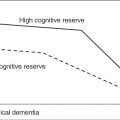Introduction
The extraordinary growth in life expectancy at birth in nearly all countries of the world reflects an ongoing revolution in longevity. This revolution has resulted in both survival of individuals to older ages and a changing age distribution of the entire population. The impact of the longevity revolution has been pervasive and profound. The impact is felt financially, socially and politically throughout the United States (USA). This trend has resulted in significant healthcare changes, both on an individual and societal level.
Developed nations across the world have approached the ageing population and need for expanded health services in a variety of ways. Home health, hospital-based and nursing home care have experienced a profound increase in complexity over the last quarter century. This complexity of care is reflected in the expansion of funding arrangements, number of service providers, and geographic service areas. Governmental expenditures for healthcare services have continued to rise but are not sustainable at the current rate. The development and passage of the Health Care Reform Bill has attempted to slow the rise in spending while promoting increased quality and universal access to care healthcare services.
Institutes of higher learning have evolved to support the growing fields of gerontology and geriatric medicine. Educating the medical providers, workforce and community on the needs of older adults has become an area of profound interest within and outside of the academic environment. It is important to draw older people into the processes of developing the services and new technologies that they themselves and others of their generation will use. By developing these new healthcare opportunities, the greatest gains may be made in health, independence and quality of life (QOL) in old age.
Overview of Healthcare Demographics
The USA spends over 15% of the GDP, 2.5 trillion dollars, on healthcare expenditures. This is more than any other industrialized nation.1–3 Healthcare expenditures have doubled in the past 10 years; however, 16% of population does not have health insurance. The provision of healthcare is equally split between private insurance, Medicare/Medicaid and other sources including out-of-pocket payers.
The annual number of hospitalizations has remained relatively stable at 11 per 100 population, and the average length of hospital admission has dropped consistently over the last 10 years to an average length of stay of 4.6 days.3, 4 Despite this trend, hospital expenditures have risen 50% in the last 10 years.3 Outpatient encounters have increased by 40% over that same time.4 About one-third of healthcare resources are spent on hospitalization and one-quarter on physician services. Individuals age 65 or older utilize one quarter of outpatient encounters, one third of hospitalization, and one third of the total healthcare expenditures.
Currently 13% of the US population is aged 65 or older. This population is projected to reach 21% by 2050.5 These trends have caused great concern both economically and socially. The healthcare budget cannot sustain the current growth rate of medical expenditures. Methods to provide cost-effective, quality healthcare for an ageing population are being addressed on a system-wide level. Research funding, educational efforts and clinical care models are being developed to better serve the healthcare needs of the geriatric population.
Development of Geriatric Medicine
In the USA, geriatrics came into the medical consciousness through the writings of Dr Ignatz Nascher. Although born in Austria, he was raised in the USA and received his medical degree from New York University. In 1909 at the age of 46, Dr Nascher published his first geriatrics article titled ‘Longevity and Rejuvenescence’. In this work he proposes that ‘geriatrics’ be added to the medical vocabulary and that it be considered a distinct aspect in medicine. Over the next five years he authored more than 30 articles on ageing and the first American geriatrics textbook titled Geriatrics: The Diseases of Old Age and Their Treatment. This text focused dually on the physiology and pathophysiology of ageing. Nascher touched on a multitude of topics including organ system physiology, pharmacology, diseases of ageing, and psychosocial aspects of medicine. With an optimistic view, he wrote in 1926 that, ‘Geriatrics is now firmly established as a special branch of medicine … ’.
Unfortunately, geriatrics was not yet widely accepted and the growth of this specialty was quite slow through the 1930s and 1940s. The mid-1900s were notable for the establishment of two medical societies. Malford W. Thewlis founded the American Geriatrics Society in 1942, and the Gerontological Society (now called The Gerontological Society of America) was established in 1945.
Research in ageing was championed by Dr E. Vincent Cowdry who received his PhD in anatomy from the University of Chicago in 1913. During his 65-year career spent predominantly at Washington University School of Medicine, Dr Cowdry focused his research efforts on cancer and the cytological changes of ageing. During the latter half of his career he authored several books including The Problems of Ageing: Biological and Medical Aspects (1939), The Care of the Geriatric Patient (1958), and Aging Better (1972).
Geriatrics in the United States developed as much through the establishment of governmental socioeconomic programmes as it did from the work of prominent physicians. In 1861, a military pension plan was established to support the Civil War era veterans. After the Civil War, many states established veterans’ homes to provide disability and medical care services. These services were consolidated through the development of the Veterans Administration in 1930. By 1935, a rapidly increasing population of impoverished older adults led to the formation the Social Security Board which reorganized in 1946 to become the Social Security Administration. This programme provides a retirement benefit to individuals upon leaving the workforce. Although state and federal subsidies for healthcare services were sporadically available in the 1920s, the first private hospital insurance plan (Blue Cross) was not provided until 1933. Further discussion and development of government-sponsored health insurance for the elderly spanned five presidential administrations and more than three decades.
In 1950, through efforts by President Truman, the Federal Security Administration held a national conference on ageing to assess the challenges posed by the changing population. No immediate programmes were initiated, but this conference spurred the development of an advisory committee on ageing that eventually lead to the first White House Conference on Aging in 1961. The conference resulted in the expansion of Social Security benefits and support for the later development of Medicare and Medicaid. In 1965, insurance was finally guaranteed to older adults, the disabled and the impoverished through the passage of Medicare and Medicaid programmes.
During the mid 1900s, the US Government was the primary financial sponsor of healthcare research and scientific programmes. The National Institute of Health (NIH) was formed in 1930 and later became a consortium of institutes and centres dedicated to healthcare research. The National Institute on Aging (NIA) was formally established out of the National Institutes of Health (NIH) in 1974, but the roots of the NIA can be traced back to the 1940s and 1950s with the Unit on Aging, Gerontology Branch, and Section on Aging subsections of NIH programmes.
The NIA receives substantial funding for the advancement of ageing research. Through NIA support, the 30 Alzheimer’s Disease Centers, 15 Claude D. Pepper Older American Independence Centers, and numerous Edward R. Roybal Centers for Research on Applied Gerontology sponsor investigations into the biological, behavioural and clinical aspects of ageing.6, 7 During the last quarter century, there has been a growth in the private support of geriatric medicine research and education. Hundreds of millions of dollars have been provided by The John A. Hartford, Donald W. Reynolds and other agencies dedicated to the care of the ageing population.
Home Healthcare
For most of history, medical care has been provided in the home by a physician. In the mid 1900s 40% of all patient–physician encounters took place at home. With the growth of hospital and office-based care, fewer than 1% of healthcare visits took place at home by 1980.8 Home healthcare (HHC) began growing again in the 1980s as new models of home assessment developed and the delivery of home care evolved into an organized, multidisciplinary business. The current HHC model primarily utilizes nursing, therapy and personal care providers to deliver healthcare services; however, physician house calls still remain under-utilized as a means of caring for frail older adults.
Home visits are an effective method for delivering medical assistance for the aged and chronically ill homebound individuals. House calls have most often demonstrated benefit in chronic and relapsing diseases such as congestive heart failure and emphysema. Regular visits by a medical professional can improve disease control and reduce hospitalizations.9, 10 This translates to a societal cost savings, which has prompted Medicare, Medicaid and private insurance agencies to continue the funding of home care services.
Medicare and Medicaid provided nearly 80% of HHC coverage in the US between 1990 and 1997, HHC expenditures grew almost sixfold to $18 billion. The growth of HHC utilization prompted a change in reimbursement from a fee for service to a prospective payment system reimbursement model. Despite the change in funding, the expenditure on HHC has continued to increase and has more than doubled since 1997.11 For each 60-day certification period, agencies are reimbursed around $2300 per enrollee, adjusted for geographic region and intensity of care provided.12 This initially resulted in a reduction in the enrolment length and frequency of HHC visits, but over the past several years, the number of home healthcare recipients has increased. In 2007 nearly three million individuals received over 114 million home care visits from 9000 certified agencies.13–15
To qualify for HHC, an agency must receive a physician order, document that a recipient is homebound (a definition that has remained vague) and provide a skilled intervention by a nurse or therapist. Common uses of HHC include medication management, disease assessment, wound care, home safety evaluation, physical and occupational therapy, and patient/family education. The average number of visits per enrollee is 37.14
When personal care is needed at home, aides can be hired for in-home assistance with laundry, housekeeping, meal preparation and personal care needs. Medicare does not pay for personal care aides, nor do most private insurance plans. Individual case management and social services are available to seniors based on resources and needs. Services such as meals-on-wheels, transportation, and legal aid are often provided on a sliding fee-scale basis. The availability of these services varies by community.
Hospice care is another service traditionally provided in the home, although there is a growing use of hospice in the nursing home setting. In 2009, over 5000 hospice agencies provided care to 1.5 million individuals through Medicare, an increase of 20% over four years. Forty percent of these patients were served at home and 19% resided in nursing homes. Eighty percent of hospice recipients are age 65 or older and just over half are female. The average length of service is 69 days but 34% of hospice recipients die within 7 days of enrolment. This suggests that hospice services are largely under-utilized for those deemed to have ‘less than 6 months to live’.15 In addition to nursing, hospice provides therapy, social service and family support in the home. Hospice agencies are not capable of providing continuous 24-hour personal care.15, 16
British physician Dame Cicely Saunders first coined the term hospice in 1967. Yale School of Nursing Dean Florence Wald subsequently adopted this care model in the United States. It was not until 1979 that the Health Care Financing Administration (HCFA) funded 26 hospices as a demonstration programme. In 1982 hospice care was added as a benefit under the Medicare and Medicaid programmes and has since become a standard benefit provided by all health insurance plans. To qualify for hospice a physician must certify an estimated life expectancy of six months or less. Half of the hospice enrollees have a terminal diagnosis of cancer. Cancer diagnoses have dropped 10% in the last three years due to a rise in use of hospice care for non-malignant terminal illnesses such as dementia and emphysema.
Nursing Home Care
The number of nursing homes in the United States has dropped slowly since the early 1980s, although the total number of residents in nursing homes has increased almost 10% during that time. In 2004 the number of licensed nursing home beds dropped to 1.7 million from 1.9 million in 1999. The average bed capacity increased slightly to an average of 108 residents per facility.17 Seventy percent of nursing home residents are female and 85% are Caucasian. The average length of stay is 2–3 years. Despite common misconceptions of the elderly population, less than 5% of citizens over the age of 65 reside in nursing homes. Less than 20% of adults over age 85 live in nursing homes.
Most nursing homes certify a portion of their beds (25–35%) for post-acute care, skilled nursing services. These residents receive intensive nursing, therapy and medical services after an acute medical illness with the hope of regaining lost function. Medicare funds most of the skilled nursing care in the United States but private insurance also covers post-acute rehabilitation services. Medicare beneficiaries receive up to 100 days of skilled nursing care before other insurance or private pay must shoulder costs. The average length of skilled nursing care is 27 days.
Medicare and most private insurers do not pay for non-skilled (custodial) care in nursing homes. The bulk of custodial care is paid for by Medicaid once individuals have ‘spent down’ their personal resources to the point of qualifying for this jointly state-federal sponsored healthcare coverage. The Medicaid qualification level varies by state. An individual generally must have a monthly income less than or equal to the federally designated poverty level ($902/ month in 2010) and net personal resources of only a few thousand dollars.18 The average yearly cost of nursing home care is roughly $70 000.19 Nursing home insurance is becoming available but in general is costly and is not widely purchased by the general population.
Nursing home care has improved dramatically in the past 20 years. The Omnibus Budget Reconciliation Act (ORBA), passed in 1987, was instrumental in changing the management and oversight of nursing home care in the United States. Unfortunately, past abuses have resulted in a highly regulated and punitive system of ensuring the current quality of institutional patient care. Nursing homes are surveyed annually by the State regulatory agency. Deficiencies and fines are applied liberally and are a matter of public record. The State has the authority to immediately close down any facility that is found to have practices that place residents in ‘immediate jeopardy’ of harm. Areas that are frequently cited include unnecessary use of physical restraints and psychotropic medication, weight loss, development of pressure ulcers and fall-related injuries.
Stay updated, free articles. Join our Telegram channel

Full access? Get Clinical Tree








